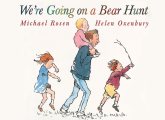Chilly weather is inevitable, so embrace the change with these outdoor maths ideas from The Muddy Puddle Teacher, Sarah Seaman...
The outdoors will always be your most powerful resource when it comes to heightening the senses of your little ones, so let’s embrace it whatever the weather.
This first tip is not always the easiest to follow, but it certainly is a game changer: get good at using exclusively natural and upcycled materials with outdoor continuous provision.
The outdoors is not an extension of your indoor space and offers entirely different learning opportunities if you get it right. During my Early Years career I’ve spent a lot of money buying big, fixed features. They have never been worth the money.
I have always got far more out of using natural and upcycled materials. Also, it makes me a far more sustainable and creative teacher when I do.
I use car tyres to fence areas off, pots and pans for music areas, scraps of decking to build mud kitchens. I make sure everything is moveable, so that when the children start to move their adventures on, my continuous provision can move with them.
Another tip is that children need to be well wrapped up when we move to the autumn and winter weather. Once that base is covered, double down on warming up by encouraging a wealth of movement and physical exertion during outdoor maths.
Very few outdoor activities should involve the children standing still for long periods. Everything out there should be encouraging gross motor movement in some way.
This is not to say the children should be running around with no structure or supervision. Activities should be educator-led with careful monitoring, with the usual vigilance around individual behaviours of the children and their safety.
Now we’ve set the outdoor scene, here are some environmentally-friendly outdoor maths ideas that with very little preparation, you could put in place tomorrow!
Autumn and winter offer you lots of opportunities for counting. This could be as simple as a string stretched across a fence with conkers threaded onto it. A small hand drill will allow you to create the hole you need to thread them onto the string.
Allowing the children to play with the conkers is a fantastic sensory experience of its own. As the children progress, encourage them to move the conkers from one side to the other one at a time.
This encourages rhythm and exercises fine motor skills. Change the material on the string from time to time to keep this area fresh. For example, you could use leaves, chestnuts or thick bamboo.
You can also dangle items such as sticks and rocks. Pre-school and Reception-aged children can count the items and keep adding and taking various amounts away to re-count, or consider how many were added or taken away.
Link this activity inside by having an area for counting using conkers and natural materials. The children will then start associating its purpose with counting and moving. Children can use tweezers or spoons to transfer the items into different containers.
Plant 1m bamboo sticks into the ground vertically in a circular pattern. Ask parents if they have any spare sticks that they are happy to donate to the cause.
As with the natural counting activities, thread items onto the sticks. Conkers, leaves and chestnuts work well. You can even try a variety of items threaded at one time.
Go further by adding other upcycled materials, as long as they are safe for younger children and babies. Yoghurt pots and water bottles are great reusable items for this.
This activity is good for movement and encourages children to move around the different posts and use their senses to explore. Again, this can be a counting exercise for younger children, recording how many posts they walk to and how many items are on the posts.
Pre-school and Reception children can start looking at what happens when they add or remove items and write the new totals on stones with chalk. In small spaces, you might just have a few bamboo sticks planted in tyres with the items threaded on – it doesn’t have to be a large circle.
On a smaller scale, children can have a go at this inside in your make-and-create area using lollipop sticks and play dough. Or give them the real deal – conkers with holes in and straws to make their own bamboo circles.
Using four bamboo sticks, lay them down in a square shape and invite children to make patterns within these using natural resources. A simple pattern suggestion is leaf, rock, leaf, rock and so on.
The aim is to encourage children to continue or complete the pattern. Once that’s mastered, make that pattern a little more complicated.
Can children make a repeating pattern in the shape of a circle? Or can they recognise a change in a previous pattern? With younger children, simply asking them to make patterns in the frame using natural resources still embeds early maths, while also being an excellent exercise for physical development.
Inside, your maths area can have a pattern-making station using the natural items you had outside. Stick and glue them onto paper this time. The more natural materials you use, the more sensory experiences your children gain – not to mention the sustainability brownie points you’ll rack up!
This activity is great to do with children of all ages. Whereas younger ones will need a lot of support, you can leave older children to see if they can do it together as a group.
First, leave out baskets containing natural items such as leaves, sticks, bark and stones. Then encourage the children to have a go at making a circle on the ground using these items.
Ask the children to make the circle big. Their tendency is often to make it far too small to start with, but they will eventually make it bigger with a bit of guidance.
Once they’ve had a good try, ask the children to change the shape. Make a square or rectangle, change up the sizes or suggest formal measurements – the sky’s the limit!
Leave this out as a continuous provision task and let the children have a go independently. Link this activity with the indoors by drawing shapes using a chalk pen on a tuff spot and supplying natural items in a basket in the middle, for them to lay over the drawn shapes.
Hopefully you’ll feel a spark of excitement at these creative and eco-friendly ideas. The enthusiasm the children will show for these active and innovative tasks can warm your heart, even in the coldest months.

Teach Early Years Awards 2021 finalists announced
Editors picks

Going on a Bear Hunt activities – Easy preschool ideas
Editors picks
